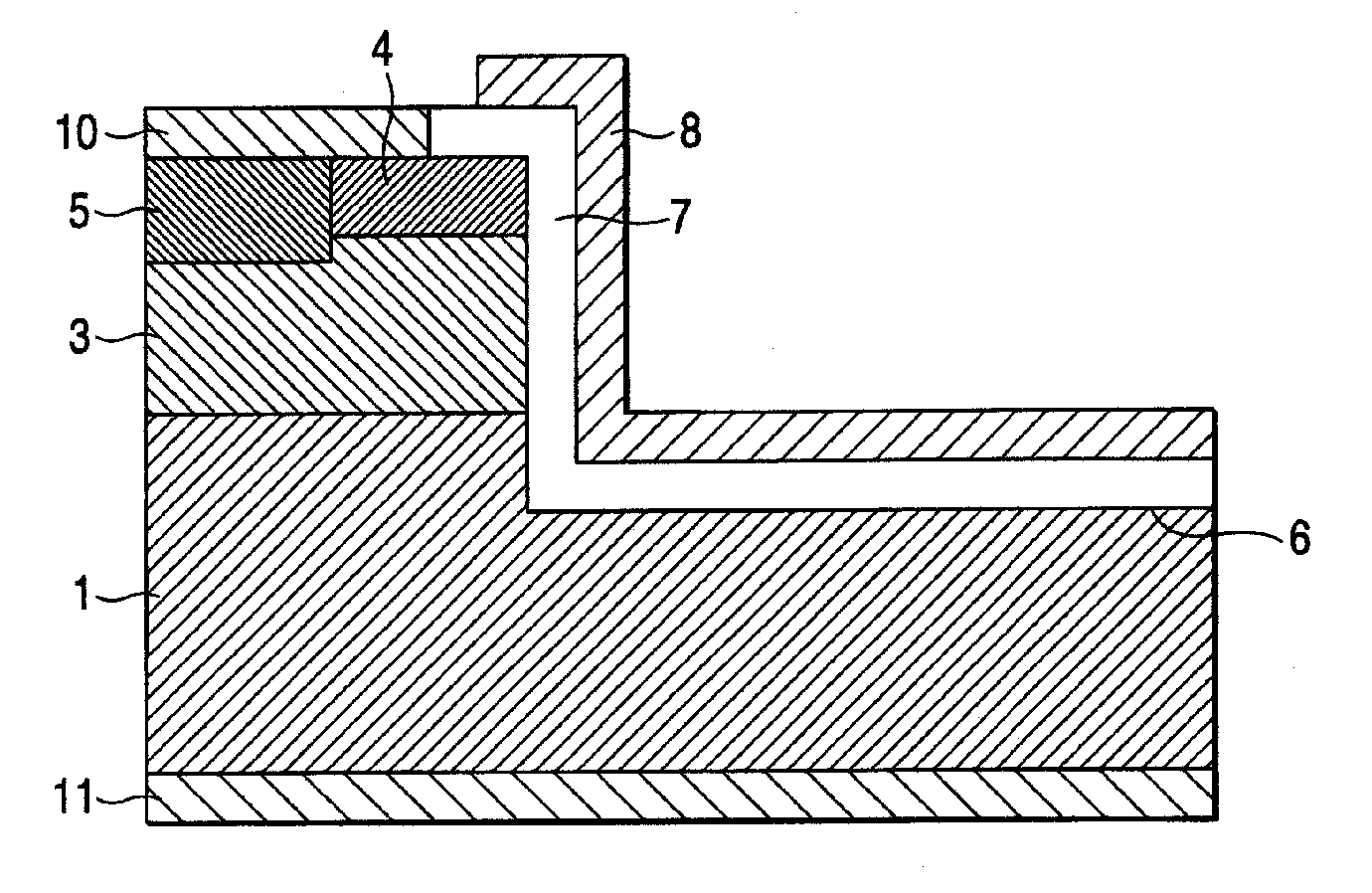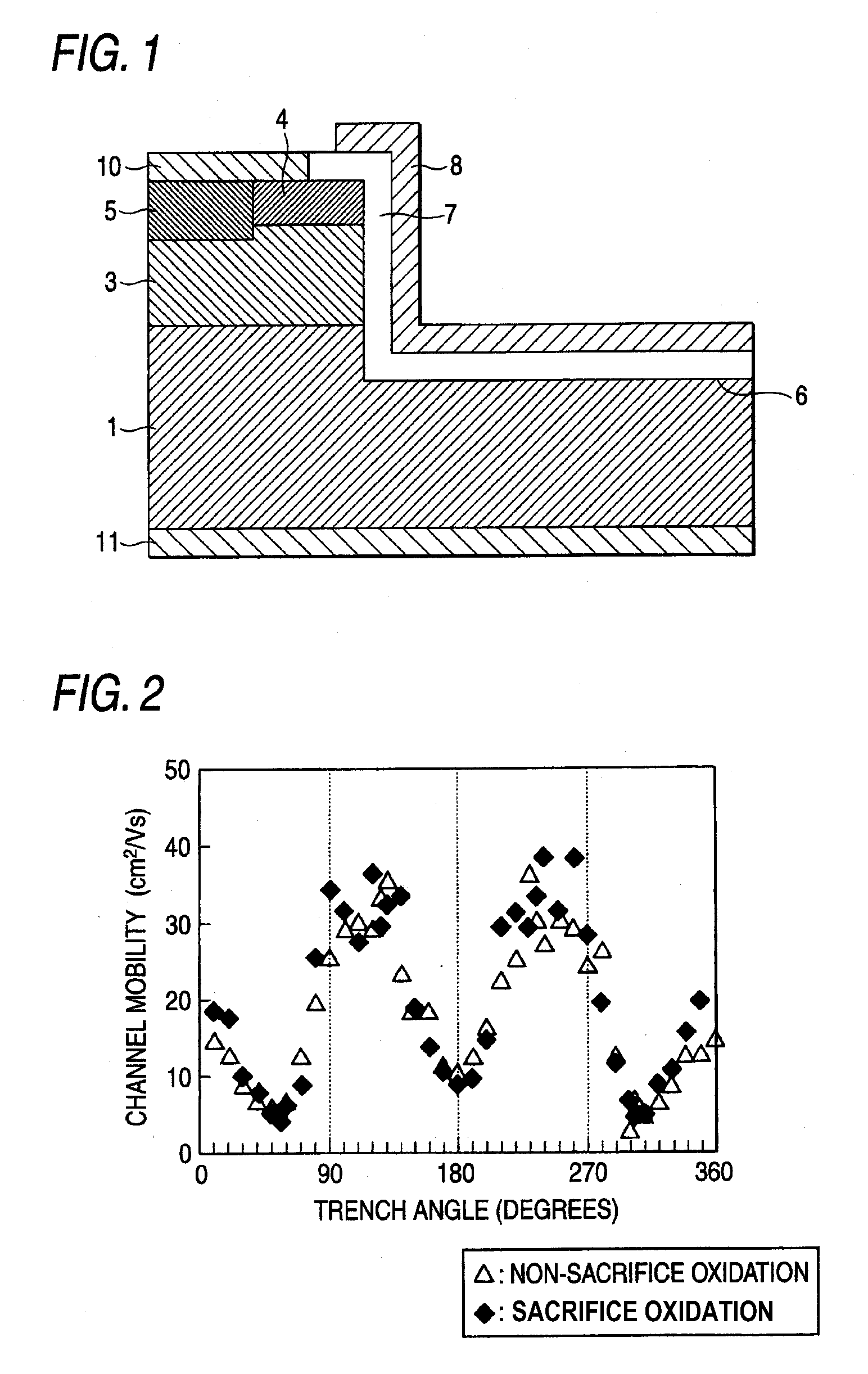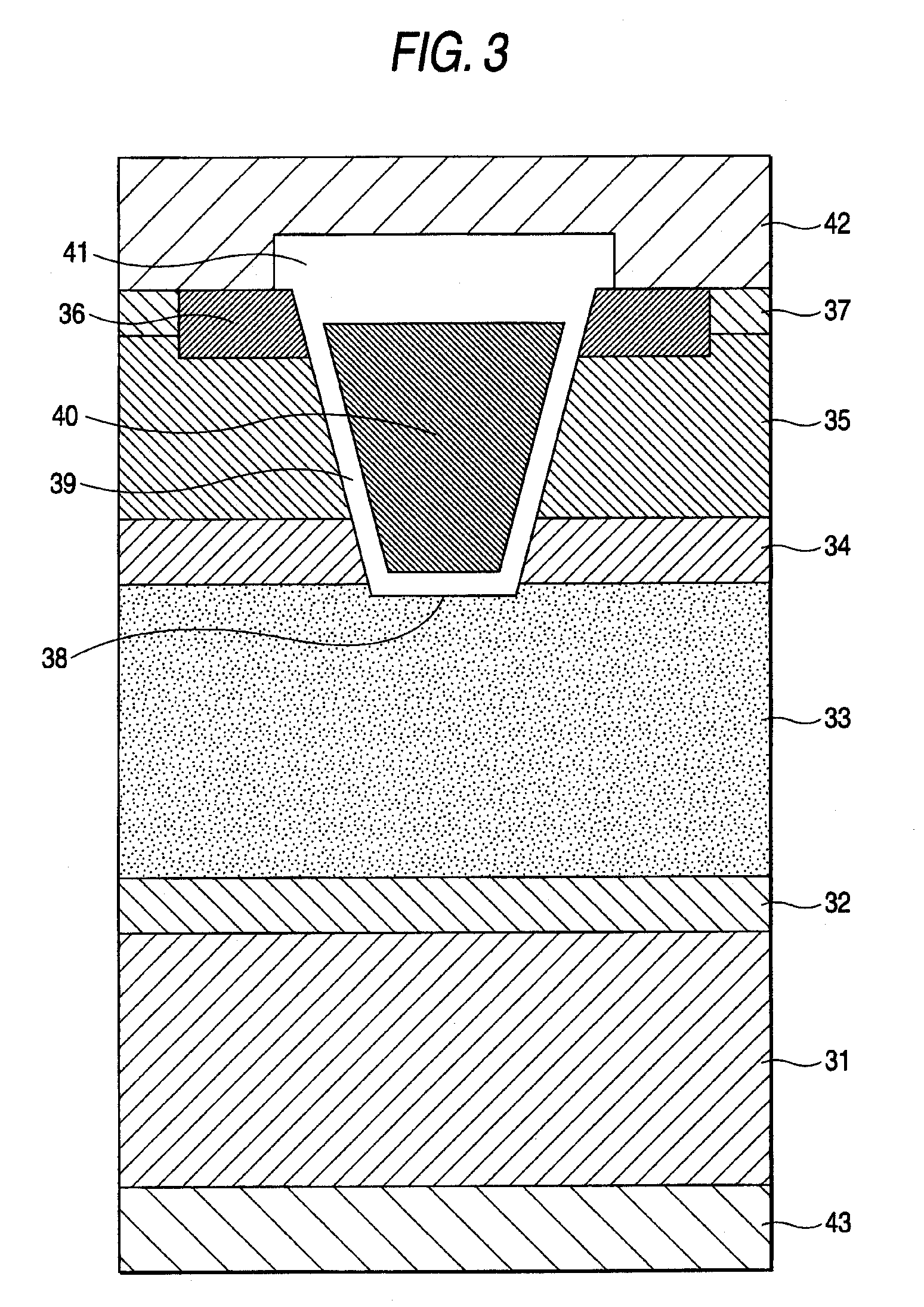Semicoductor device and manufacturing method thereof
a technology of semiconductors and manufacturing methods, applied in the direction of semiconductor/solid-state device manufacturing, semiconductor devices, semiconductor devices, etc., can solve the problems of high insulation breakdown field, inability to increase the doping concentration of the body region exceeding the upper limit, and reducing the on-resistance of the sonic field
- Summary
- Abstract
- Description
- Claims
- Application Information
AI Technical Summary
Benefits of technology
Problems solved by technology
Method used
Image
Examples
embodiment 1
[0056]FIG. 3 is a cross-sectional view showing the configuration of a vertical trench MOSFET of the invention. An n-type field stopping layer 32, an n-type withstand voltage layer 33, an n-type current spreading layer 34, and a p-type body layer 35 are successively stacked on one major face of an n+-type 4H-SiC substrate 31 in which a {0001} face is the major face. An n+-type source contact region 36 and a p+-type body contact region 37 adjacent thereto are provided on the p-type body layer 35. A trench 38 penetrates through the n+-type source contact region 36, the p-type body layer 35, and the n-type current spreading layer 34, and reaches the n-type withstand voltage layer 33. The side wall face and the bottom face of the trench 38 are covered with a gate oxide film 39. A gate electrode 40 is embedded inside the gate oxide film 39 within the trench 38. The upper side of the gate electrode 40 is covered with an interlayer insulation film 41. A source electrode 42 comes into ohmic...
embodiment 2
[0106] In Embodiment 2, since a mask alignment margin and an exposure boundary are 2 μm, respectively, when the designed trench angle is 90 degrees, the cell pitch is large as 14 μm. For that reason, the influence due to the trench side wall face being inclined is not so large. However, when the mask alignment margin and the exposure boundary are small, the cell pitch is small when the designed trench angle is 90 degrees. Thus, the influence due to the trench side wall face being inclined becomes strong. For example, even by technologies of the related art, it is easy to regulate a mask alignment margin and an exposure boundary at 1 μm, respectively. In that case, when the designed trench angle is 90 degrees, the cell pitch is 7 μm. When the designed trench angle is 75degrees or 60 degrees, the cell pitch is 9 μm or 11 μm, respectively. In the case of a designed trench angle of 75degrees and the case of a designed trench angle of 60 degrees, when they both have the same resulting tr...
embodiment 3
[0111] Embodiment 3 is an example having a cross-sectional structure the same as in the trench MOSFET as illustrated in FIG. 3 and having a hexagonal cell structure in which all lines of intersection between the semiconductor upper face and the trench side wall face are parallel to directions. Each trench side wall face is inclined from a {1-100} face into the direction. In this way, as considered in Preliminary Experiments 1 and 2, even when the trench angle changes within a certain range, it is possible to realize a state where the channel mobility does not largely change.
[0112] In Embodiment 3, a third example in which a designed trench angle is 75 degrees and a cell pitch is 16 μm and a fourth example in which a designed trench angle is 60 degrees and a cell pitch is 18 μm will be described. Incidentally, although in Embodiment 3, the hexagon of the cell structure is generally a regular hexagon, it need not be a regular hexagon. Since preparation procedures of Embodiment 3 are...
PUM
 Login to View More
Login to View More Abstract
Description
Claims
Application Information
 Login to View More
Login to View More - R&D
- Intellectual Property
- Life Sciences
- Materials
- Tech Scout
- Unparalleled Data Quality
- Higher Quality Content
- 60% Fewer Hallucinations
Browse by: Latest US Patents, China's latest patents, Technical Efficacy Thesaurus, Application Domain, Technology Topic, Popular Technical Reports.
© 2025 PatSnap. All rights reserved.Legal|Privacy policy|Modern Slavery Act Transparency Statement|Sitemap|About US| Contact US: help@patsnap.com



